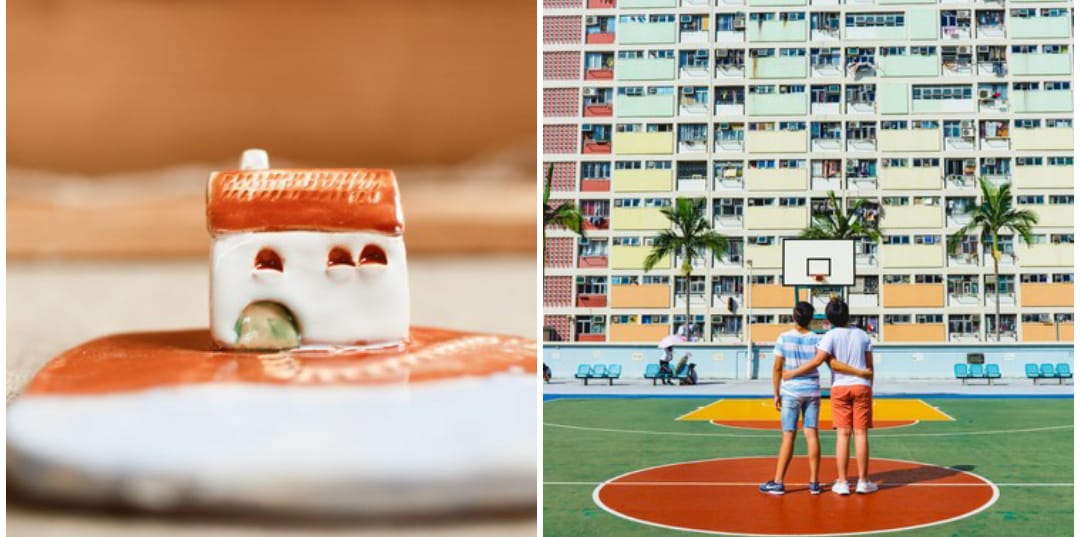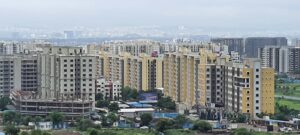Pune: Plot vs Flat – Which Is Right for You in 2023?

– by Akash Pharande, Managing Director – Pharande Spaces
Pune, 19th July 2023:
Plotted developments have been in the news fairly regularly since the Covid-19 pandemic. It appears that many Indians are now considering this option versus investing in built-up homes. Such preferences are dictated by many factors, including availability, infrastructure development, cultural preferences for low-rise homes, investment preferences, and knowledge – and, of course, the cost factor.
To begin with, we must consider the price of a plot of land suitable and cleared for residential development (technically, non-agricultural or NA land), or a plotted development.
How Much Land to Build a Home? – The amount of land needed to build, say, a small 2 bedroom bungalow may require 600-800 square yards of land, while a spacious 4-5 bedroom luxury bungalow may need 1200-1500 square yards. In prime urban areas, land availability is lower so a decent-sized bungalow can be built on 400-600 square yards while in the suburbs or in smaller towns, 800-1000+ square yards would be considered adequate.
Plot Cost – In Mumbai, a plot of 100-300 square yards in areas like Thane, Navi Mumbai, Vasai-Virar, and Panvel will cost anywhere between Rs. 60,000 – 90,000 per square yard, depending on the exact location and other factors such as nearby infrastructure facilities. In Pune, typical residential plot sizes range from 150 to 400 square yards and carry price tags of anywhere between Rs. 5,000 – 12,000 per square yard, again depending on the location within the city.
And this is just the cost of the land. Next comes the cost of building a home on it.
Construction Costs – Building on a Plot – According to a Anarock Property Consultants 2022 report, the average cost to construct a 2,000 sq ft standalone home in India is Rs 3,000-3,500 per sq ft, totalling an outlay of Rs 60-70 lakh. In contrast, a 2BHK apartment in many major Indian cities averages Rs 80-90 lakh, while 3BHK units average Rs 1-1.1 crores.
In short, there are significant up front savings with built-up apartments versus acquiring and building on a plot of land. However, people who buy plots are also focused on capital appreciation – the most important feature of land investment.
According to a report by PropTiger, also from 2022, land appreciation in the last decade has been very significant. In fact, it was 100-150% in non-metro tier-2 and tier-3 cities when compared to 50-75% in metros. So, apartments are more cost-effective but land value growth can recoup the cost of a plot over the long term.
Plotted Development Benefits
Apart from the potential returns on investment, there are other features to buying a plot and building your own home on it. For instance, you can customize the property as you wish, with your own layout, finishing, design elements, landscaping, and other features that match your lifestyle and tastes.
Built-up property formats like apartments constrain changes and personalization. As architect Rahul Kadri aptly stated, “Personalization gives a character to the space. This is only possible when one builds a home from scratch.”
According to Anarock data, custom homes represented 73% of new residential construction in 2021 – a year that saw several major waves of Covid-19. Vaccines were being rolled out, helping to reduce severe illness and death, but the pandemic’s shockwaves were still being felt and were influencing many kinds of decisions and preferences.
The world was a very different place in 2021. Fast forward to 2023, and now the question is – are self-developed homes still a better option than buying a decent-sized flat in a modern residential township?
Township Living Advantages
No doubt, plotted developments and even bare, undeveloped land became very appealing during and immediately after Covid-19 – but only for those with the right amounts of financial means, patience and investment temperament. For middle-class end-users, something very different became most important during the pandemic – community living.
What most working professionals and nuclear families sought in post-pandemic India included a sense of neighborhood, belonging, plug-and-play lifestyle features, and especially health-focused amenities.
Modern townships, especially those built by leading developers, provide superior amenities and far more conveniences than you can add into a home you have built yourself. After all, township properties do not stand in solitary splendor – they are well-thought-out and immaculately enabled projects.
A modern township offers facilities like swimming pools, gyms, sports courts, walking trails and jogging tracks, children’s play areas and clubhouses by default. Maintenance is covered through association fees versus the individual upkeep costs of a standalone property. Townships and other forms of gated communities also provide far greater security than any standalone home can provide.
Housing Prices Growth
On a final note, since we already examined the capital appreciation of land, let’s also look at how much apartments gained in value. Different real estate consultancies have estimated the average price increase in the leading Indian cities to be anywhere between 5-18% over the past three years.
RBI’s All-India Home Price Index, which references transaction-level data provided by the registration authorities across the top 10 major Indian cities, finds that HPI has gone up by almost 10% in the last three years. It also states that housing prices rose by 4.57% between March 2022 and March 2023, which indicates that prices continue to rise across the metros.
The consistently high sales rate in townships and gated community projects by leading developers indicates that this is more than adequate for most Indians who prefer the convenience of plug-and-play homes over the complexities of acquiring land and developing homes on it.








